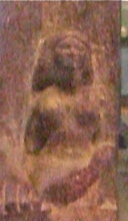| Khentetka | |||||
|---|---|---|---|---|---|
 Queen Khentetka shown kneeling next to King Djedefre. Part of a colossal seated statue of the King. | |||||
| Queen consort of Egypt | |||||
| King | Djedefre | ||||
| Spouse | Djedefre | ||||
| Dynasty | 4th Dynasty of Egypt | ||||
| Religion | Ancient Egyptian Religion | ||||
Khentetka or Khentetenka (fl. 26th century BCE) was a queen consort of Egypt; the wife of King Djedefre during the 4th Dynasty.